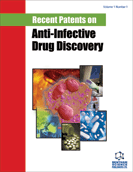Abstract
Background: The diseases tuberculosis, triggered by intracellular pathogens, is a major problem for the global medical professionals. Treatments for these diseases through conventional dosage form consist of long-term therapy with multiple drugs, leading to several side effects and contribute to low patient compliance and drug resistance. The pathogens are found to be situated in the intracellular compartments of the cells, which ultimately results in additional blockades to effective treatment. Therefore, improved and more efficient therapies for such intracellular diseases are required.
Methods: This review discusses the potential of nanomedicine and related patents to improve intracellular disease chemotherapy. To complete the objective, we searched bibliographic databases of indexed literature using a focused and structured criteria. The quality and characteristics of selected papers were assessed using standard parameters with qualitative analysis having a conceptual framework.
Results: Nanoparticle-based drug delivery systems are suitable for the treatment of illnesses, such as tuberculosis. Due to the unique size-dependent properties, nanocarriers such as nanoparticles, liposomes, niosomes and microspheres offer the opportunity to develop new therapeutic and diagnostic tools. The ability to integrate drugs into nanosystems displays a new standard in pharmacotherapy that could be used for cell-targeted drug therapy. Experimental data showed the possibility of intermittent chemotherapy with main antituberculosis drugs by employing nanocarriers. Besides the advantage of the controlled release of medications in organs, the other benefits of the nanocarriers include the possibility of various routes of therapy, reduction in drug dosage and adverse effects, reduced possibility of drug interactions, and drug-resistant targeting. Published literature including patented studies suggests that nanomedicine mediated drug delivery may improve tuberculosis chemotherapy by offering benefits such as targeting to the specific organs, sustained and controlled drug release, tuberculosis diagnosis, drug delivery to the pathogen’s intracellular location, and tuberculosis vaccine development.
Conclusion: The properties of nanomedicine may prove beneficial in developing improved, efficacious or alternative therapies for tuberculosis diseases.
Keywords: Nanomedicine, tuberculosis, nanoparticles, chemotherapy, drug targeting, nanopharmaceuticals.
Graphical Abstract
 21
21 2
2





















